Uncanny X-Men, Part 16: Enter Wein, Claremont and Cockrum in 1975
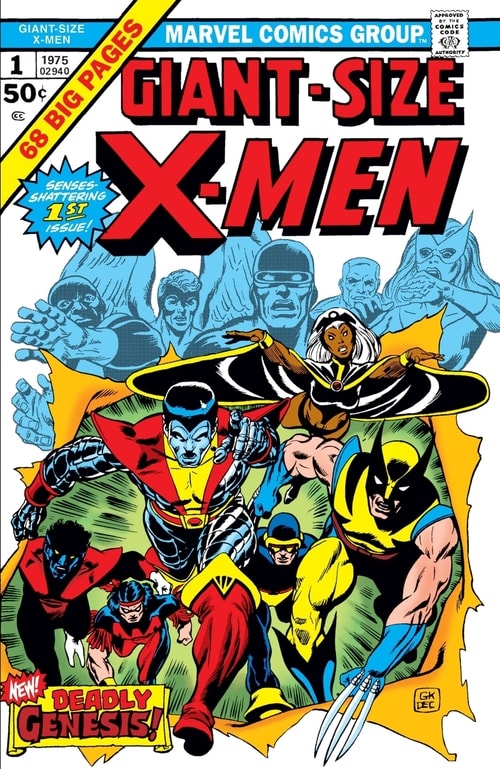
Welcome to the 16th installment of my reread of the X-Men, starting from issue #1 in 1963!
Today’s post is kind of a big deal, because Giant-Size X-Men #1 is the launch pad for the modern X-Men. This of course leads to the gigantic sales success in the early 90s, the cartoons, the movies and everything. In essence, after a five-year absence of new X-Men stories, Giant-Size X-Men #1 adds to the X-pantheon three previously-created, but little-known mutants (Sunfire, Wolverine and Banshee) and four brand new ones (Storm, Nightcrawler, Colossus and Thunderbird).
The return of the X-Men was apparently the brainchild of Marvel Editor-in-Chief Roy Thomas sometime in 1973 or 1974. He liked the X-Men, had written the title for years, and wanted to make them into an international team. Thomas’ thinking had led to him asking Len Wein, the writer on The Incredible Hulk, to come up with a Canadian hero (see my post #15, but please grab yourself a no-prize if you notice that I’d missed crediting John Romita Sr. as one of the Wolverine co-creators — as Art Director he’d designed Wolverine’s costume).
Thomas had assigned Mike Friedrich to work with Dave Cockrum on the new X-Men, but switched the assignment to Len Wein after Wolverine made a positive impression. I don’t know how much causality there is in the assignment switch or if it was just the normal churn of freelance workers, but it’s interesting to wonder what a Mike Friedrich X-Men might have been like.
Friedrich did short superhero runs on Batman, Flash, Justice League of America and Iron Man, but I know him as much more of a genre guy, especially horror, weird and science fiction. I’ve read his Captain Marvel, Strange Tales (Golem) and Warlock, and he’s got other credits in Outlaw Kid, Werewolf by Night and Western Gunfighters. I honestly don’t know how he’d handle a big team or the core themes of the X-Men, as I wasn’t sure he’d done an awesome job with the messiah themes in Warlock (see my post The Three Phases of Adam Warlock, Part I).
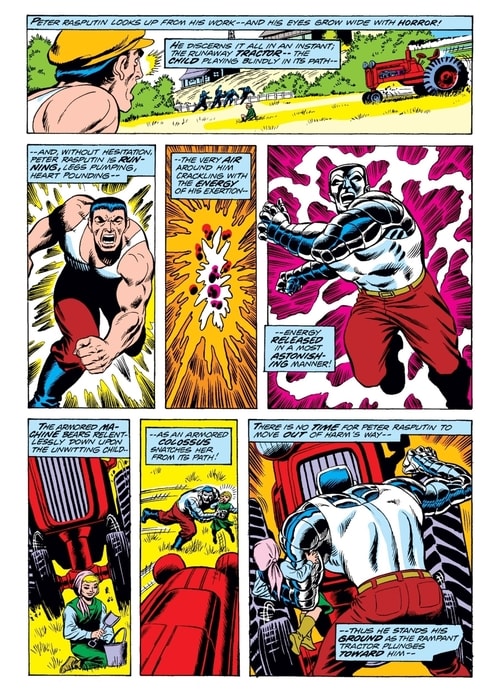
As a young comic reader on an allowance who started buying Uncanny X-Men off the spinner rack starting with issue #154, I’d obviously missed some stories. And I couldn’t walk into a comic shop and buy GS X-Men #1, so I at first knew the new X-Men origin story principally through the excellent retrospective issue of Uncanny X-Men #138 by Claremont, Byrne and Austin. However, Marvel released a deluxe reprint of GS X-Men #1 in 1983 and that’s when I first got to read this issue for real. Giant-Size X-Men #1 has three basic chapters. The first is Professor X collecting the team. Each character gets between half a page and 2-3 pages of introduction.
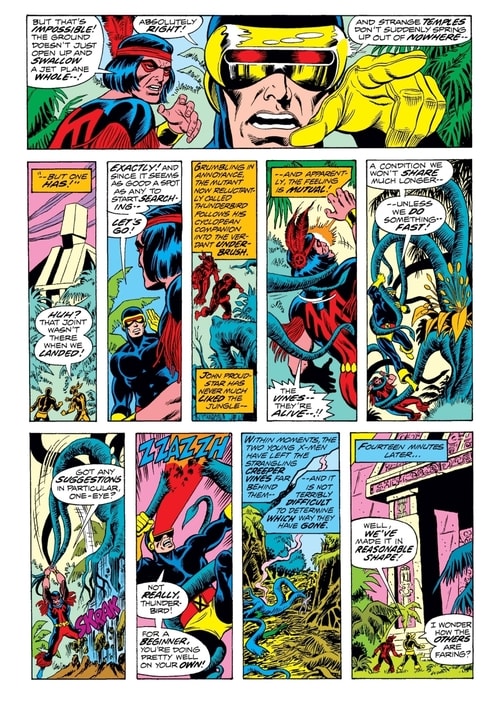
I would love to say that for the standards of the time, the character work was good, but I don’t think I can. There are a lot of stereotypes, some of which are downright cringy, even then to me as a 12-year old. Eileen Gonzalez at BookRiot wrote a great article about race and stereotypes in the issue called Giant-Size X-Men #1: Iconic and Racist AF. It’s a good read and I think it’s important to put the positives and negatives on the balance.
Some of my thoughts: Did Marvel include characters of various ethnic backgrounds and bring a little more authenticity to the X-Men? Yes. Did the characters feel true in this issue? No. Did male and female characters have similar agency and depth? Probably, as the power sets needed to save the X-Men come from Storm and Polaris, although I might not be the perfect person to answer that in all its dimensions. And as the series develops and Claremont takes over, he’ll show a tendency to make the women characters more powerful than the men, and to have them drive the stories and conflicts in ways that the Silver Age did not.
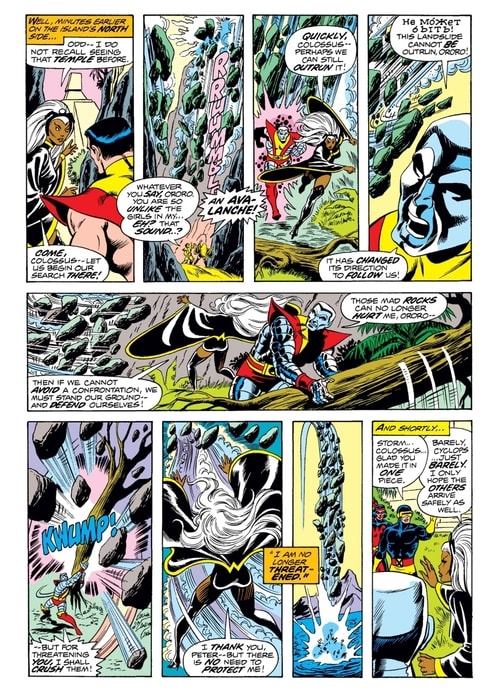
Professor X needs a new team because the original X-Men have been captured by Krakoa, a living mutant ecosystem created by nuclear testing in the Pacific. This is a cool idea on the face of it, and one that Jonathan Hickman is delving into with House of X and Powers of X. The mission of the new X-Men is to rescue the old, which is a bit meta, considering the old team had been on publishing life-support for five years.
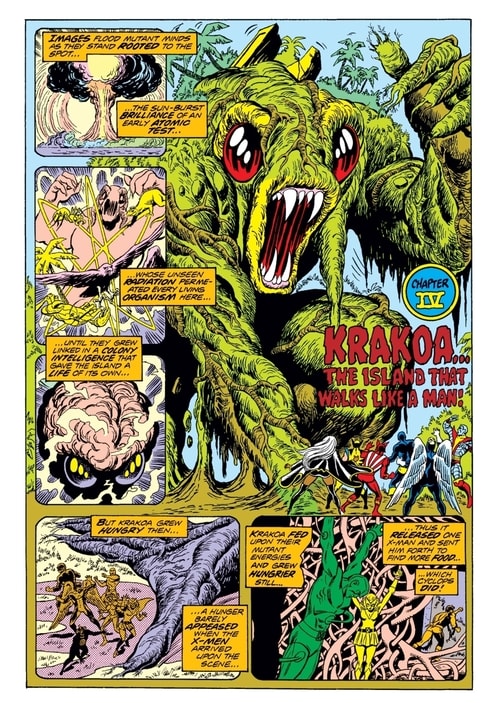
Giant-Sized X-Men #1 is a substantial, fun issue with fully Bronze Age attempts at characterization, authentic tries at recognizing that mutants would be born to other ethnicities and nations of the world, and with a few exceptions, comic buyers responded positively, so much so that Marvel decided to do an Giant-Size X-Men #2.
But by this time, Len Wein had taken over for Roy Thomas as Editor-in-Chief, so he wouldn’t have the time to write any more X-Men. So he co-plotted the next X-Men story with Chris Claremont and decided that instead a second Giant-Size X-Men, they would break the story up and put it in the main X-Men book as issues #94 and #95.
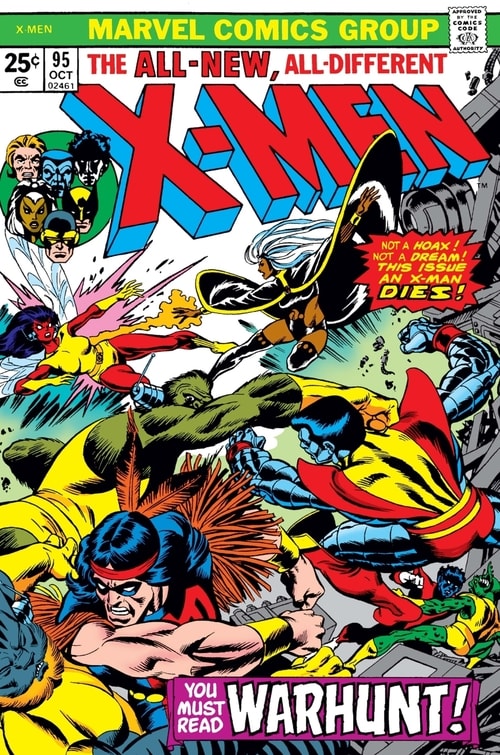
Giant-Size X-Men #1 indisputably feels like a Marvel Comic in tone, but in the two-part story of issue #94 and #95, Wein and Claremont begin to distinguish X-Men from the rest of the Marvel Universe. The Giant-Size ended with a kind of cheery “What are we going to do with 13 X-Men?” and issue #94 shuts down that optimism right away. The original X-Men (Iceman, Angel, Havok, Polaris, and Marvel Girl) tell Cyclops and Professor X that they’re leaving. They’ve grown up and they don’t need a school.
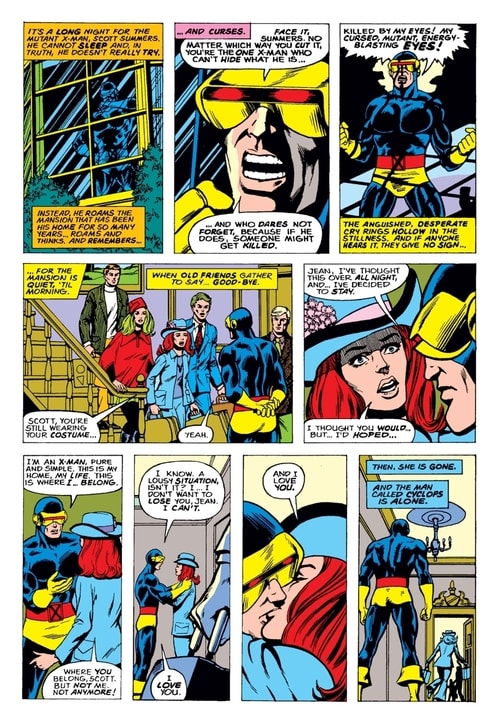
This is emotionally crushing for Scott and Charles. Their departure is quickly followed by Sunfire’s who wants nothing to do with them. And on that cheery, tone-setting note for the series, Cyclops begins to train the new X-Men and they certainly do not mesh as smoothly as the original team.
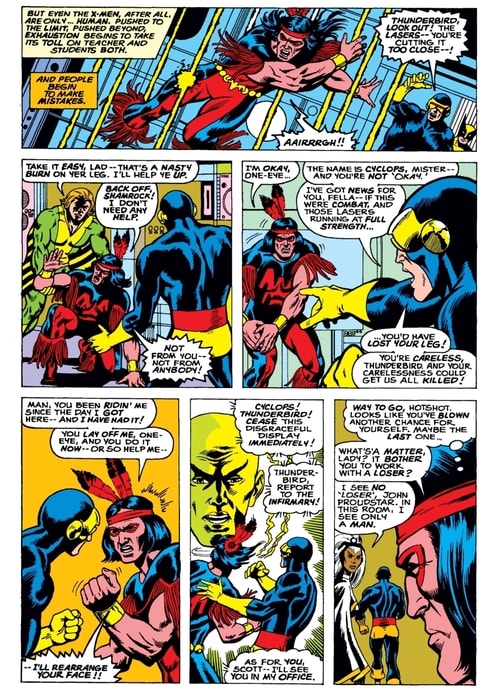
The Avengers are away, so Beast (currently an Avenger) calls the X-Men for help. A supervillain has taken control of the US strategic missile command and is holding the world ransom in a Dr. Evil sort of way.
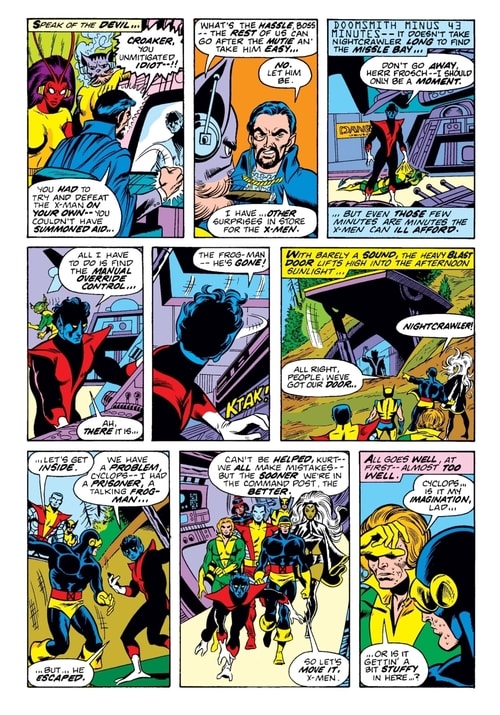
Over two issues, the X-Men make their way into the heavily fortified base and almost catch the villain.
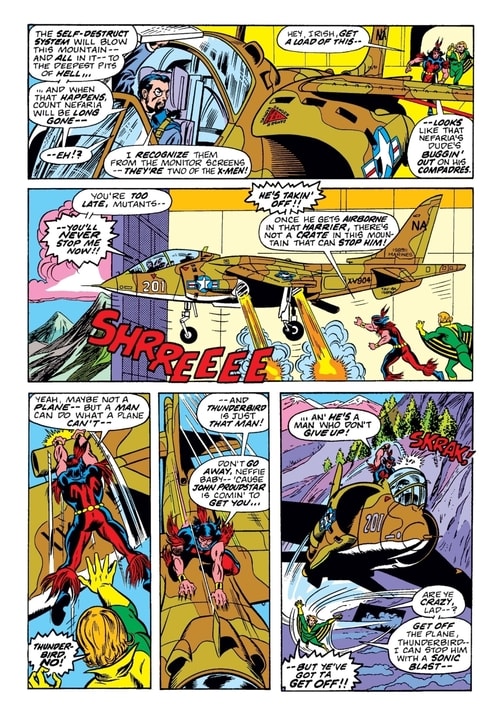
As he’s trying to get away, Thunderbird, who’s been really resentful of Cyclops and Professor X, jumps on the escaping jet, determined to take down the villain alone even if it kills him. And he succeeds and it does.
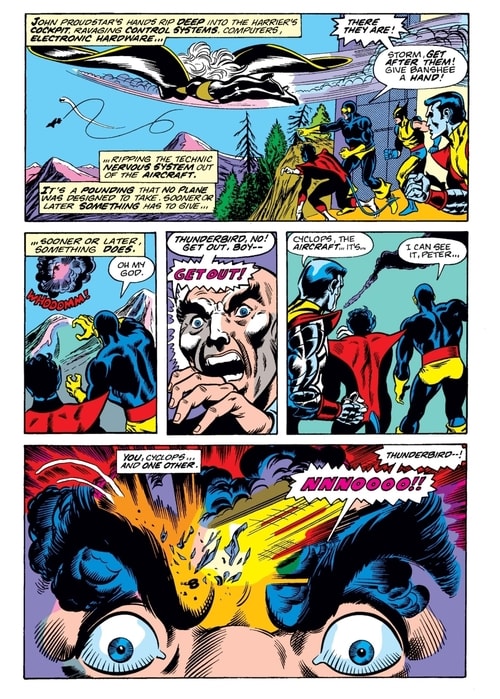
It’s a poignant death, in part because we don’t understand what would have driven John Proudstar to that end, and in part because Professor X stays with Thunderbird telepathically as he dies, so that the reader does too. Thunderbird’s death, as well as the departure of the original X-Men and Sunfire, also strongly signal that tonally, this book is different. Superhero stakes are always high, save the planet, yadda, yadda, but this was a sign that Uncanny X-Men would have higher emotional stakes than other books at Marvel, and more concern for the interiority of those characters, even if style was melodrama.
I have a couple of “what if” thoughts here too, as Len Wein hands off the writing tasks fully to Chris Claremont for the next 17 years. Would a Len Wein run on the X-Men have lasted as long and as stably? Would he have brought the team soap opera melodrama, the endless subplots and the character moments that were arguably the secret sauce that drove the X-Men to become the top-selling by the 1980s? Wein was an accomplished writer of Swamp Thing, Amazing Spider-Man, The Incredible Hulk and The Fantastic Four, but I’m guessing that a Wein-Cockrum X-Men would have been a very different series. There’s irony in this musing too. Wein handed over the X-Men because he wouldn’t have time as Editor-in-Chief, but he ended up giving that to Marv Wolfman very shortly.
The other thing that more concretely makes me feel that a Wein-Cockrum series would have made for a different history is that looking at Giant-Size X-Men #1 and Uncanny X-Men #94 and #95, there isn’t much there about the core concept of mutantkind as a persecuted minority. The first story is a straight-forward rescue plot and the second is about defeating a very standard super-villain (so standard in fact, that the trope of holding the world for ransom was spoofed in Austin Powers). Neither really invokes the X-Men’s raison d’être. I suppose we’ll never know, and history has given us Claremont’s 17-year run.
In Uncanny X-Men #96 (Dec, 1975) Claremont and Cockrum are fully driving the series now with no more than normal help from editorial. It’s a one-off story (if there is such a thing when Claremont is writing), but there’s a subplot involving Colonel Michael Rossi and the Sentinels that will begin to play out as Claremont takes the thematic bull by the horns for an amazing space adventure that is really about hating and fearing what we don’t understand.
I’ve mentioned before that Gil Kane was doing a lot of Marvel covers in the Bronze Age and four of them in this post are laid out by him and inked by others. As an interesting note of trivia, apparently on Giant-Size #1, Kane drew Wolverine’s horns much taller than Trimpe had in The Incredible Hulk. When Cockrum saw the change, he liked it so much he went through the interior art and changed it all to correspond to Kane’s vision. I guess it takes a village to make an unstable psycho Canadian.
Before ending this post, we’ve got to take a short detour into a 2-issue guest appearance by Nightcrawler in The Amazing Spider-Man #161-162. It was published in October, 1976, a full year after Uncanny X-Men #96, so I was surprised to see it placed after Uncanny X-Men #96 in some of the reading order guides I’ve been following online. But then I realized that starting with issue #97 of Uncanny, events are going to be breathlessly fast with cliffhangers until issue #105 or #106, so I guess it’s either look at it now or then.
I’ve never been a fan of Ross Andru’s art and Mike Esposito doesn’t make me love it more, and the story itself is forgettable. It’s a low-stakes “someone-is-framing-the-Punisher-and-Spider-Man-and-Nightcrawler-each-think-the-other-did-it” tale. I don’t know if Len Wein liked Nightcrawler and thought this would help X-Men sales, or if he needed something to fill two issues, but completists will want to have read it for some Bronze Age Nightcrawler team-up.
I will make one other note. In 2005, Ed Brubaker and Trevor Hairsine made a major and inventive retcon to Deadly Genesis in a 6-issue limited series called X-Men Deadly Genesis. This story revealed that there was a group of X-Men between the original and the team I’ve described here. They were recruited to save the original X-Men from Krakoa but they all died and Professor X erased all memory of them from Scott Summers out of guilt. The real memories were revealed in that 2005 series and it’s really really good, as you’d expect from Brubaker. I don’t know the right place to cover it — probably in the 2005 era if I ever make it there, because its impact bear on the storyline of then.
Thanks for sticking with me! If you want to own these issues, there are a few Masterwork editions in softcover and hardcover, and there’s the ever-economical Marvel Unlimited too. I know we’re covering a lot, and my next blog post is going to be a fun one for me, covering Uncanny X-Men #97-101.
If you want to catch up on any of my other posts about the X-Men, they’re below:
- Part I: Introducing The Strangest Super-Team of All: Uncanny X-Men #1 (Nov 1963) to #20 (May 1966)
- Part II: Early Guest Appearances (1964-65), Uncanny X-Men #21-23 (1966), and X-Men: First Class Volume I (2006)
- Part III: X-Men: First Class, Volume II (2007) and First Class Finals
- Part IV: Uncanny X-Men #24-39: The Middle Years of the Original Team
- Part V: Uncanny X-Men #40-48: Death and Separation
- Part VI: Uncanny X-Men #49-53: Reunion and Family and Steranko
- Part VII: Uncanny X-Men #54-58 — Havok and Neal Adams
- Part VIII: Uncanny X-Men #59-66: The Savage Land and the End of the Silver Age X-Men
- Part IX: Filling in the Corners of the Original X-Men with Savage Hulk #1-4
- Part X: John Byrne’s The Hidden Years #1-4
- Part XI: Storm, the FF and Phoenix in John Byrne’s The Hidden Years
- Part XII: X-Men Guest Appearances in 1971-1972 and Hank gets Furry!
- Part XIII: Englehart’s Bronze Age Monster Horror – The Beast
- Part XIV: 1973 and 1974 – Magneto, the Hulk, Banshee and post-Watergate Captain America
- Part XV: 1974 and 1975 – The Last Tales of the Original X-Men
- Part XVI: Enter Wein, Claremont and Cockrum in 1975
- Part XVII: 1976 — Sentinels in Space and the Rise of Phoenix
- Part XVIII: Juggernaut and Magneto — For the Very First Time
- Part XIX: Phoenix, Firelord and the Imperial Guard
- Part XX: Iron Fist, Blame Canada and Some Strike-Outs
- Part XXI: Epic Magneto Triumph and more X-Men Death!
- Part XXII: 1978 — The Savage Land, Japan and Psionic Throwback Thursday!
- Part XXIII: 1979 — Chaos in Canada with Alpha Flight!
- Part XXIV: Arcade, Murderworld and their First King-Sized Annual
See you in two weeks!
Derek Künsken writes science fiction in Gatineau, Québec. His first novel, The Quantum Magician, a space opera heist, was a finalist for the Locus, Aurora and Chinese Nebula awards. The ebook of The Quantum Magician is on sale for until August 7th and its sequel, The Quantum Garden, will be on sale all of August. His third novel, The House of Styx, got a starred review in Publishers’ Weekly and is finishing its run in Analog Science Fiction and Fact right now. Solaris Books will be releasing the audio and ebook editions in August, 2020 (pre-order link), with the hardcover release in April, 2021. He also has a novella in the Jul/Aug, 2020 issue of Asimov’s Science Fiction called “Tool Use by the Humans of Danzhai County.”
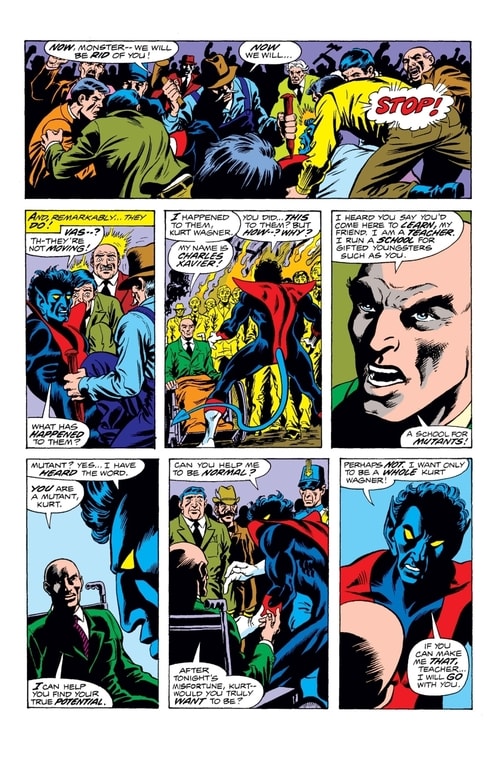
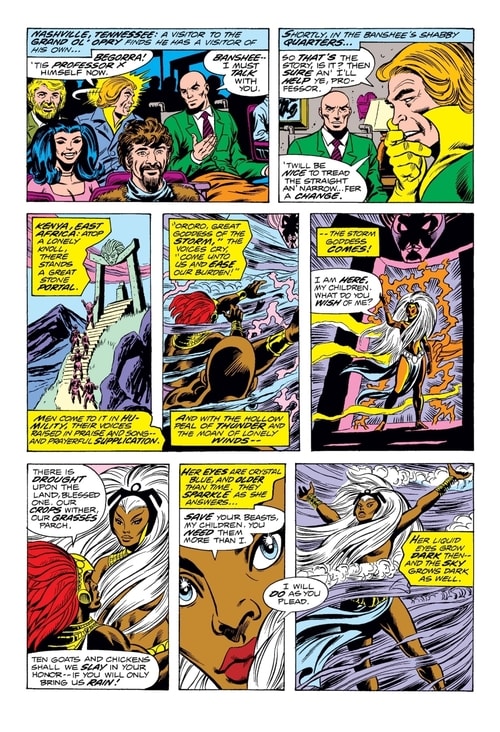

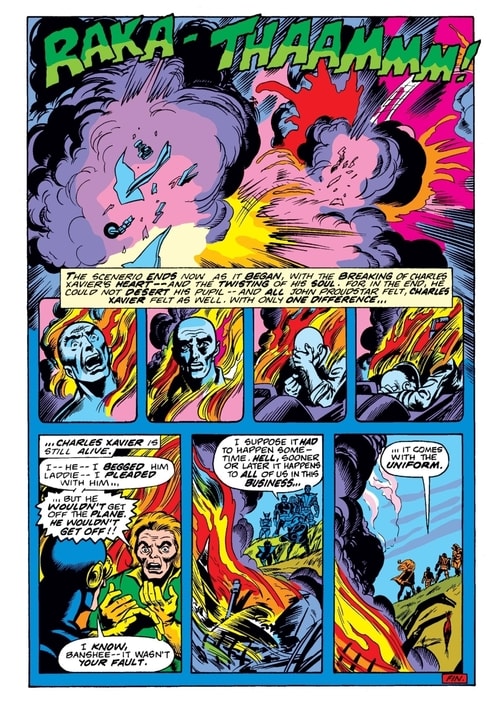
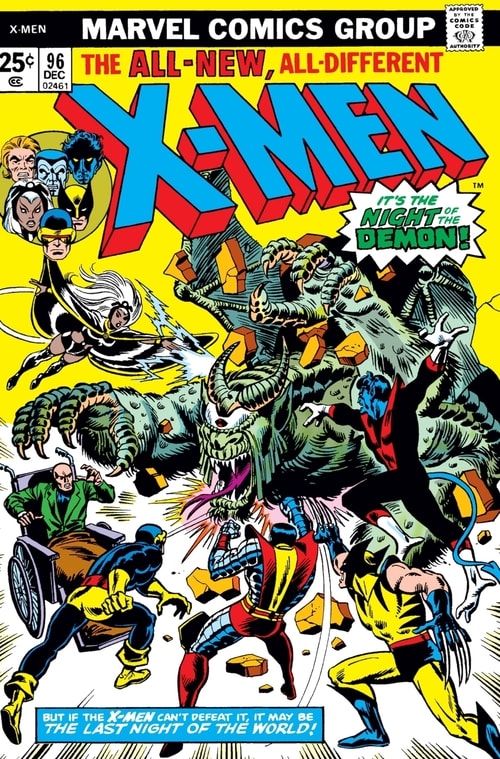
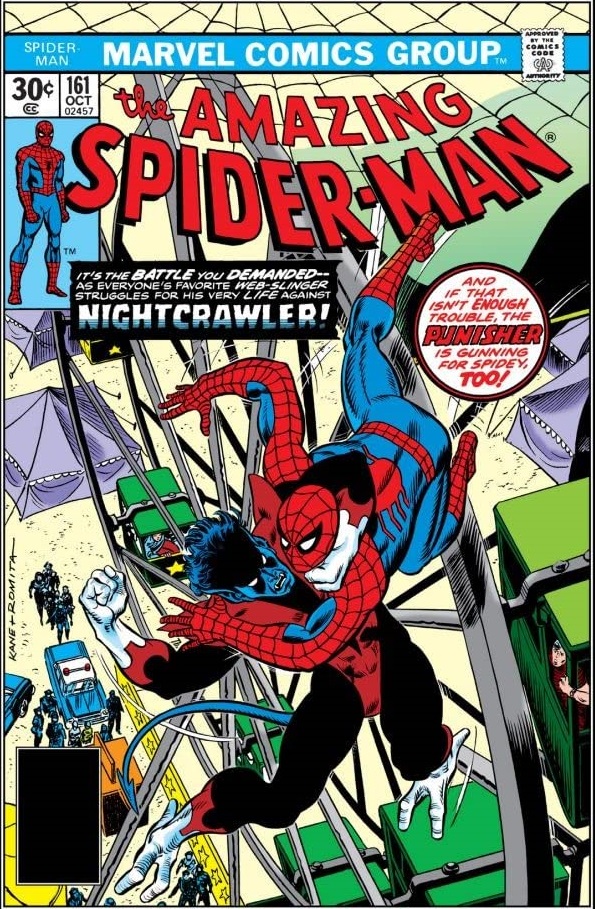
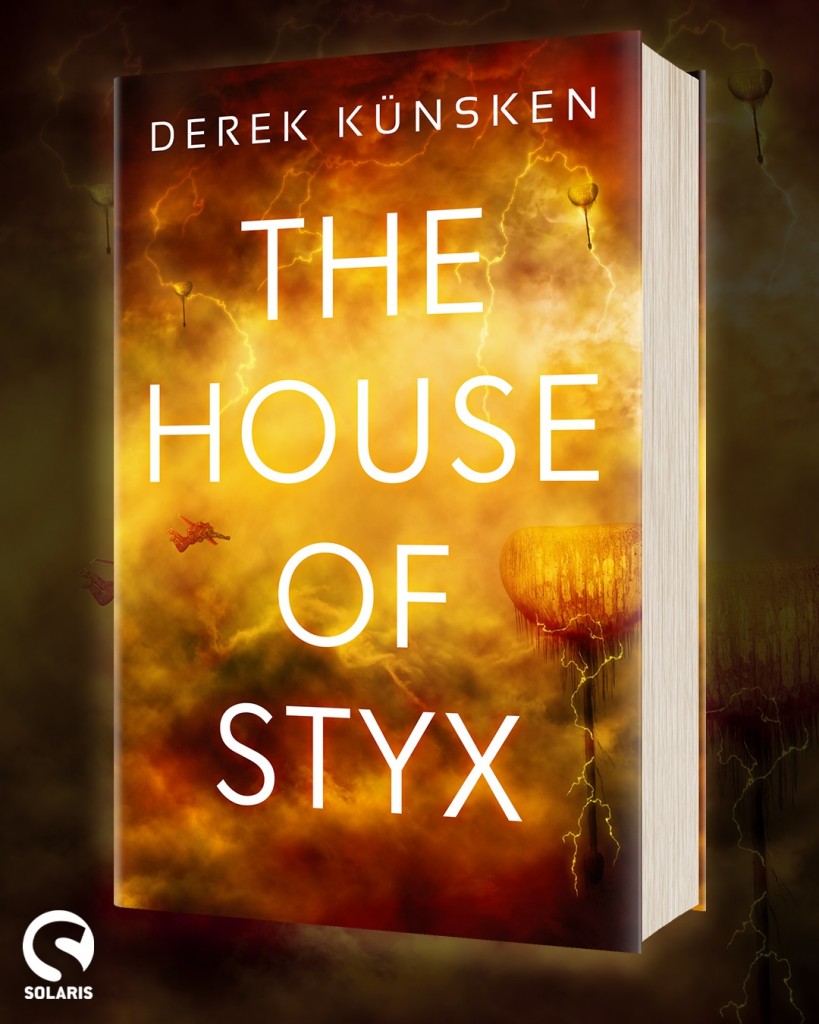
You’re almost caught up to me. I read these last winter and I just finished the brood saga last week. I forgot how rough the characterizations are at the beginning.
While the writing feels clunky compared to Claremont/Byrne, it’s still better than pretty much anything in the 70s (except Starlin)
I’ve been pleasantly surprised. I assumed that most of Claremont’s run would be similar to God Loves, Man Kills but most of it hasn’t been that so far. They are fun sci-fi tales that don’t always tackle heavy themes.
I’m still chugging along with My Marvelous Year, I’m up to 1983.
Hey Glenn! Haha. Unless you pause and read the New Mutants or something, I’m not going to catch up. 4-6 issues seems to make a good blog post, so it’ll take me about 25 weeks to catch up to the brood saga (which I love!) because I want to catch the guest appearances and annuals too. So slow and steady, I guess? I’m happy you’re reading too!
On the writing, I’m also pleasantly surprised. All of Marvel was overwritten for a long time, but the story itself is solid and compelling and emotional and satisfying, so I think in a love of ways I overlook the flowery and indulgent prose, or I read it with the eyes of 11-year old Derek. The other thing to remember too is that this is Claremont’s early work. He’d been in comics a very short time when he took on this title that had no expectations on it.
I’m sure we would talk for hours about this over beers…
This is my first time reading all this stuff. I was nenver into comics as a kid and the cartoon show wasn’t on much by the time I was watching (watched a lot of Batman and spider-man though)
I’ll save my Claremont writing style comments for later when we can talk about what Byrne brings to the series.